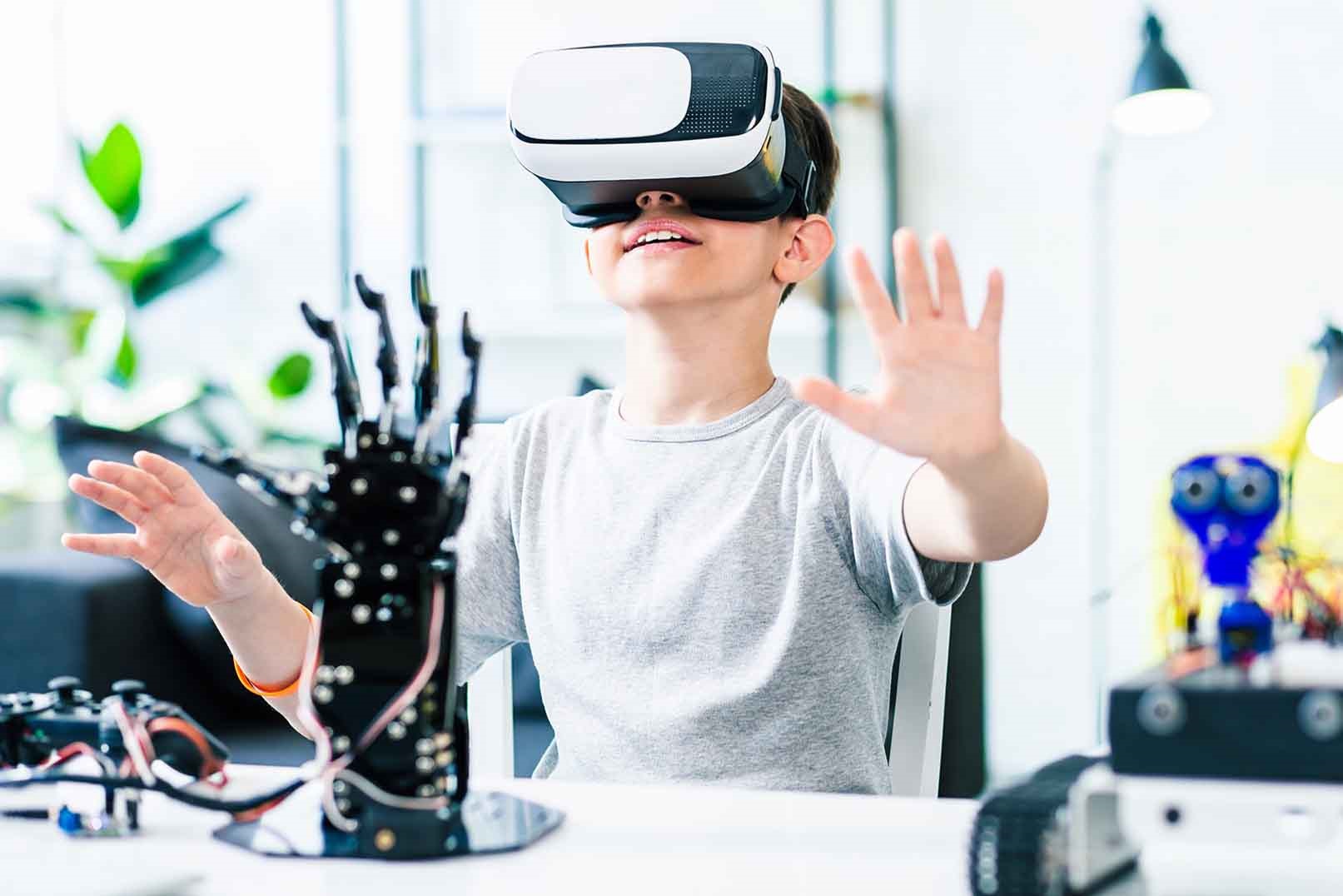Home>Latest News>Technology Trends>Augmented Reality Business Card


Technology Trends
Augmented Reality Business Card
Modified: September 5, 2024
Stay ahead of the curve with our augmented reality business cards. Embrace the latest technology trends and leave a lasting impression.
(Many of the links in this article redirect to a specific reviewed product. Your purchase of these products through affiliate links helps to generate commission for Techsplurge.com, at no extra cost. Learn more)
Table of Contents
Introduction
In the fast-paced world of technology, augmented reality (AR) has become a game-changer, transforming various facets of our lives. One particularly fascinating application of AR is in business cards. Traditional business cards have long been a staple in professional networking, yet they fall short in conveying complex information and engaging users. Augmented reality business cards, however, offer a dynamic, interactive way to present oneself, making professional interactions more engaging and memorable.
What Are Augmented Reality Business Cards?
Augmented reality business cards are digital versions of traditional business cards that use AR technology to enhance user experience. These cards typically feature a unique QR code or NFC tag that, when scanned, activates an AR experience. This experience can include various features such as:
- Interactive Profiles: Scanning the card reveals a detailed profile of the cardholder, including contact information, work experience, skills, and social media links.
- Videos and Animations: Short videos or animations can showcase the cardholder's personality, work, or achievements.
- 3D Models: Users can view 3D models of products or services offered by the cardholder, providing a more immersive experience.
- Interactive Links: The AR experience can include interactive links to the cardholder's website, LinkedIn profile, or other relevant online platforms.
- Gamification: Some AR business cards incorporate gamification elements, such as quizzes or challenges, to make the interaction more engaging.
Benefits of Augmented Reality Business Cards
Enhanced Engagement
Traditional business cards often get lost in clutter. AR business cards offer an interactive experience that captures attention and keeps users engaged.
Increased Information Retention
The dynamic nature of AR experiences aids in retaining information better. Users are more likely to remember details presented in an engaging, interactive manner.
Read more: The Impact of Augmented Reality on Business
Professionalism and Creativity
AR business cards allow individuals to showcase creativity and professionalism uniquely. Personalized messages, animations, or even virtual tours of workspaces can be included.
Cost-Effective
While traditional business cards can be expensive to produce and distribute, AR business cards can be created digitally and shared via QR codes or NFC tags, reducing costs.
Sustainability
By moving away from physical cards, AR business cards contribute to a more sustainable environment. No more paper waste or frequent replacements.
Global Reach
With the rise of mobile devices, AR business cards can be accessed by anyone with a smartphone, making them a global tool for professional networking.
How to Create an Augmented Reality Business Card
Design Your Card
Start by designing your digital business card using a design tool like Adobe Illustrator or Canva. Ensure the design includes a clear QR code or NFC tag.
Choose an AR Platform
Several platforms are available for creating AR experiences, such as ARKit for iOS, ARCore for Android, and platforms like Vuforia or Wikitude.
Develop the AR Experience
Use the chosen platform to develop the AR experience. This involves creating interactive 3D models, videos, and animations that will be triggered when the QR code or NFC tag is scanned.
Read more: The Advantages of Augmented Reality
Test and Refine
Test your AR business card thoroughly to ensure it works seamlessly across different devices and platforms. Refine any issues that arise during testing.
Distribute Your Card
Once your AR business card is ready, distribute it through various channels such as email attachments, social media links, or even physical events where attendees can scan the QR code.
Examples of Successful Implementations
Tech Industry
Companies like Microsoft and Google have already started using AR technology in their business cards. For instance, Microsoft’s HoloLens allows users to view detailed holographic profiles of colleagues.
Marketing and Advertising
Brands are leveraging AR business cards to create memorable marketing experiences. For example, a fashion brand might use AR to showcase virtual try-on capabilities.
Education and Training
Educational institutions are using AR business cards to provide interactive learning experiences. Students can scan the card to access tutorials or virtual labs.
Healthcare
Medical professionals are utilizing AR business cards to share patient information and treatment plans in an engaging manner. This helps in better communication and understanding between healthcare providers and patients.
Challenges and Limitations
Technical Requirements
Not all devices support AR technology, which can limit the reach of your AR business card. Users need a compatible smartphone or tablet to access the experience.
User Adoption
There is a learning curve associated with using AR technology. Some users might find it difficult to navigate the interactive elements, which could lead to frustration.
Content Creation
Creating high-quality AR experiences requires significant investment in content creation. This includes designing 3D models, writing scripts for animations, and ensuring smooth transitions between different elements.
Data Security
As with any digital tool, there are concerns about data security. Ensuring user data is protected and not misused is crucial when implementing AR business cards.
Read more: What Are AR Apps
Future Developments
Improved Accessibility
Future AR platforms will likely be more accessible, allowing users to create and access AR experiences with ease.
Enhanced Interactivity
Expect more interactive elements such as augmented reality filters, virtual try-ons, and immersive storytelling.
Integration with Wearable Devices
The integration of AR technology with wearable devices like smart glasses will open up new possibilities for professional networking.
Read more: Augmented Reality Programming
AI-Powered Personalization
AI algorithms will enable personalized AR experiences tailored to individual users' preferences and needs.
Augmented reality business cards are not just a novelty but a powerful tool for enhancing professional interactions in the digital age. As technology continues to advance, these cards will become even more sophisticated and integral to our daily professional lives.









